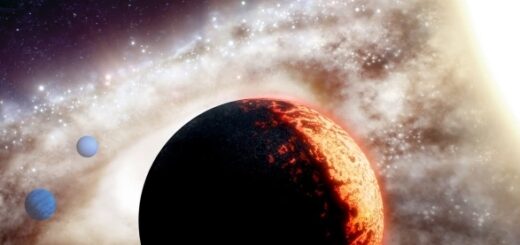Ancient Astronauts – A General Overview

Ancient paintings from Val Camonica, Italy are believed to depict forgotten deities; ancient astronaut proponents claim these pictures resemble modern day astronauts despite being painted ca. 10,000 BC.
According to certain authors, intelligent extraterrestrial beings called ancient astronauts or ancient aliens have visited Earth, and this contact is connected with the origins or development of human cultures, technologies, and religions.
A common variant of the idea include proposals that deities from most, if not all, religions are actually extraterrestrials, and their technologies were taken as evidence of their divine status.These proposals have been popularized, particularly in the latter half of the 20th century, by writers Erich von Däniken, Zecharia Sitchin, Robert K. G. Temple, and David Icke.
Ancient astronauts have been widely used as a plot device in science fiction, but the idea that ancient astronauts actually existed is not taken seriously by most academics, and has received little or no credulous attention in peer reviewed studies.
Proponents of ancient astronaut theories often maintain that humans are either descendants or creations of beings who landed on Earth thousands of years ago. An associated idea is that much of human knowledge, religion, and culture came from extraterrestrial visitors in ancient times, in that ancient astronauts acted as a “mother culture.”
Other proposals include the idea that civilization may have evolved on Earth twice, and that the visitation of ancient astronauts may reflect the return of descendants of ancient humans whose population was separated from earthbound humans. These ideas are generally discounted if not ridiculed by the academic and skeptical communities.
Proponents argue that the evidence for ancient astronauts comes from supposed gaps in historical and archaeological records, and they also maintain that absent or incomplete explanations of historical or archaeological data point to the existence of ancient astronauts.
The evidence is said to include archaeological artifacts that they argue are anachronistic or beyond the presumed technical capabilities of the historical cultures with which they are associated (sometimes referred to as “Out-of-place artifacts”); and artwork and legends which are interpreted as depicting extraterrestrial contact or technologies.
Mainstream academics, when they comment at all on such proposals, have responded that gaps in contemporary knowledge of the past need not demonstrate that such speculative ancient astronaut ideas are a necessary, or even plausible, conclusion to draw. Academic researchers in related disciplines generally maintain that there is no evidence to support the proposals of ancient astronauts or paleocontact.
Francis Crick, the co-discoverer of the double helix structure of DNA, however strongly believed in what he called panspermia, the concept that earth was ‘seeded’ with life, probably in the form of bluegreen algae, by intelligent extraterrestrial species, for the purpose of ensuring life’s continuity. He believed that this could have been done on any number of planets of this class, possibly using unmanned shuttles. He talks at length about this theory in his book Life Itself.
Scientific consideration
In their 1966 book Intelligent Life in the Universe astrophysicists I.S. Shklovski and Carl Sagan devote a chapter to arguments that scientists and historians should seriously consider the possibility that extraterrestrial contact occurred during recorded history. However, Shklovski and Sagan stressed that these ideas were speculative and unproven.
Shklovski and Sagan argued that sub-lightspeed interstellar travel by extraterrestrial life was a certainty when considering technologies that were established or feasible in the late ’60s; that repeated instances of extraterrestrial visitation to Earth were plausible; and that pre-scientific narratives can offer a potentially reliable means of describing contact with outsiders.
Additionally, Shklovski and Sagan cited tales of Oannes, a fishlike being attributed with teaching agriculture, mathematics, and the arts to early Sumerians, as deserving closer scrutiny as a possible instance of paleocontact due to its consistency and detail.
In his 1979 book Broca’s Brain, Sagan suggested that he and Shklovski might have inspired the wave of ’70s ancient astronaut books, expressing disapproval of “von Däniken and other uncritical writers” who seemingly built on these ideas not as guarded speculations but as “valid evidence of extraterrestrial contact.”
Sagan argued that while many legends, artifacts, and purported out-of-place artifacts were cited in support of ancient astronaut theories, “very few require more than passing mention” and could be easily explained with more conventional theories. Sagan also reiterated his earlier conclusion that extraterrestrial visits to Earth were possible but unproven, and perhaps improbable.



 Creators of mankind
Creators of mankind Description of “Tall white aliens”
Description of “Tall white aliens” Where they came from?
Where they came from? About hostile civilizations
About hostile civilizations The war for the Earth
The war for the Earth “Tall white aliens” about eternal life
“Tall white aliens” about eternal life Video: “Nordic aliens”
Video: “Nordic aliens” Aliens
Aliens Alien encounters
Alien encounters The aliens base
The aliens base UFO
UFO Technology UFO
Technology UFO Underground civilization
Underground civilization Ancient alien artifacts
Ancient alien artifacts Military and UFO
Military and UFO Mysteries and hypotheses
Mysteries and hypotheses Scientific facts
Scientific facts


















